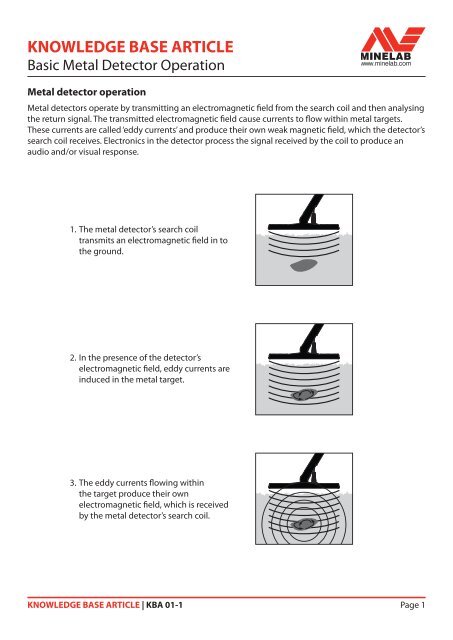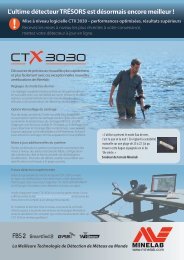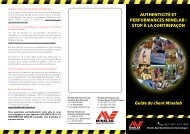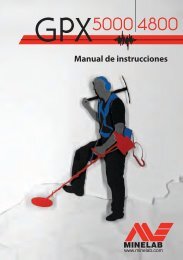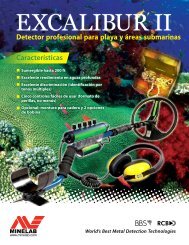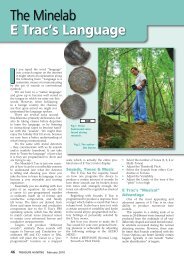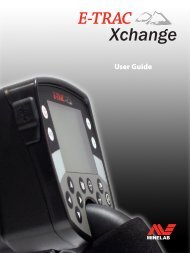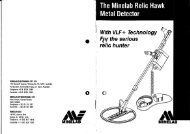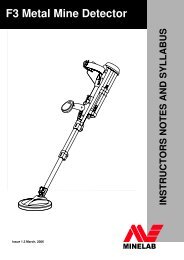Basic Metal Detector Operation - Minelab
Basic Metal Detector Operation - Minelab
Basic Metal Detector Operation - Minelab
You also want an ePaper? Increase the reach of your titles
YUMPU automatically turns print PDFs into web optimized ePapers that Google loves.
KNOWLEDGE BASE ARTICLE<br />
<strong>Basic</strong> <strong>Metal</strong> <strong>Detector</strong> <strong>Operation</strong><br />
<strong>Metal</strong> detector operation<br />
<strong>Metal</strong> detectors operate by transmitting an electromagnetic field from the search coil and then analysing<br />
the return signal. The transmitted electromagnetic field cause currents to flow within metal targets.<br />
These currents are called ‘eddy currents’ and produce their own weak magnetic field, which the detector’s<br />
search coil receives. Electronics in the detector process the signal received by the coil to produce an<br />
audio and/or visual response.<br />
1. The metal detector’s search coil<br />
transmits an electromagnetic field in to<br />
the ground.<br />
2. In the presence of the detector’s<br />
electromagnetic field, eddy currents are<br />
induced in the metal target.<br />
3. The eddy currents flowing within<br />
the target produce their own<br />
electromagnetic field, which is received<br />
by the metal detector’s search coil.<br />
KNOWLEDGE BASE ARTICLE | KBA 01-1 Page 1
<strong>Basic</strong> <strong>Metal</strong> <strong>Detector</strong> <strong>Operation</strong><br />
The magnetic field produced by a target is dependent on two target electrical characteristics:<br />
1. Electrical resistance – The target’s resistance, or conversely its conductivity, determines how<br />
easily eddy currents flow within the target.<br />
2. Electrical inductance – The target’s inductance causes it to resist rapid changes in current<br />
(increases or decreases). This can also be explained as resistance to alternating current, which is<br />
called inductive reactance.<br />
The target’s resistance and inductance are determined by the target’s size, shape, metal type, orientation<br />
and amount of impurities present in the target.<br />
The electromagnetic field produced by the target in response to the detector’s electromagnetic field has<br />
two components based on the target’s resistance and inductance:<br />
1. A reactive component (X signal), which is the same as the transmitted electromagnetic field.<br />
2. A resistive or loss component (R signal), which is delayed.<br />
The metal detector’s search coil receives these components and the detector’s electronics process the<br />
signals and indicate the target’s properties to the user.<br />
KNOWLEDGE BASE ARTICLE | KBA 01-1 Page 2


